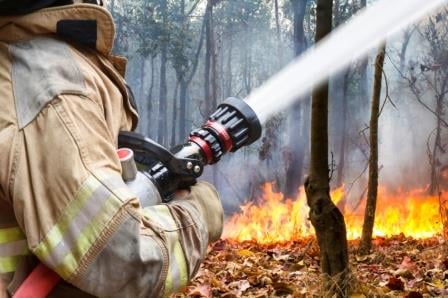

California is recovering from one of the worst wildfire seasons in US history. In recent months, hundreds of thousands of Californian residents were forced to flee their homes and abandon their businesses to escape raging blazes.
The state’s Insurance Commissioner Dave Jones released a statement on January 31, reporting that insurers had received almost 45,000 insurance claims up to that point, resulting in almost $12 billion in losses.
A lot of speculation and concern was raised for California’s world-famous wine industry. Many of the larger wineries in the state have multiple locations, some of which were in central wildfire zones. Fortunately, the worst of the fires struck after the peak of the grape crush, which meant most of the grapes had already been harvested from the vines limiting damage to the fruit from smoke and air dropped fire retardant.
“When the fire started last year, it was spread by 70mph winds through an area that gets hardly any rain in the summer. It was a very challenging situation because it was such a dry environment and there wasn’t a whole lot that could be done to control fire spread,” said Thomas Neale, risk specialist at Chubb Risk Engineering Services.
Neale has been advising California-based Trinchero Family Estates – one of the largest family-run independent wineries in the US – for almost 25 years. While Trinchero’s facilities are not overly at risk to wildfire and brush exposures, Neale and the Chubb team continue to make frequent evaluations to determine the evolving risk profile of the estates.
“There are two key exposures around wildfire: physical damage to property, and business interruption,” Neale told Insurance Business. “The physical damage aspect is obvious, but the business interruption exposures may not be as apparent. For example, if a fire took out utilities and cut the power to a winery, this could have a serious impact on production. Refrigeration is a key part of the fermentation process to ensure the quality of wine, and if power is cut, the quality of the wine could be impacted.
“Another aspect of wildfire-caused business interruption is blockage of physical access to the winery. The facility itself might not have been directly impacted by the fire, but access roads might be blocked, as authorities might be keeping people away from certain areas to protect them from disaster zones.”
A basic rule for mitigating wildfire risk is to control the brush in the immediate vicinities, so as not to let fire spread directly to a winery facility from adjacent areas, Neale explained. There are many other things winery operators can do to mitigate fire risk, such as creating defensible space around buildings so firefighters can protect structures by landscaping with fire-resistant plants, hardening buildings against wildfire by utilizing non-combustible materials in building construction or utilizing the traditional wine caves for wine storage.
Chubb has extensive experience and knowledge of the wine business from a risk engineering, underwriting and claims perspective. Professionals like Neale understand the winery business and use their experience to make detailed hazard assessments and recommend solutions.
“This knowledge and experience enables Chubb to build strong relationships with our winery clients, such as Trinchero Family Estates,” Neale added.
